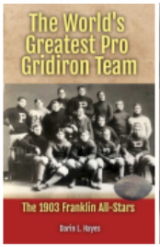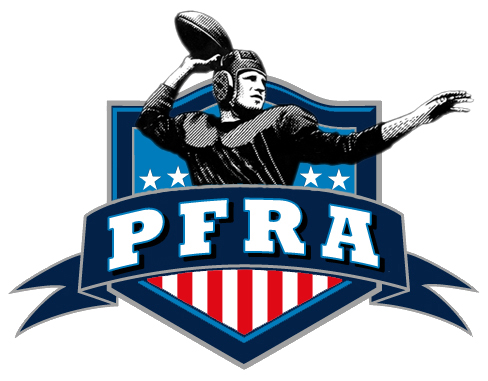The American Athletic Conference
The American Athletic Conference (AAC), often simply called "The American," is a competitive and ascending force in college football. Formed in 2013 as a result of the breakup of the original Big East Conference, the AAC inherited several established programs and quickly carved its own identity. Its origins lie in the desire of several institutions to maintain a high level of competition in football and basketball.
The conference currently boasts a diverse membership geographically, stretching from Florida to Pennsylvania and beyond. Notable members include the Temple Owls, East Carolina Pirates, Tulane Green Wave, South Florida Bulls, and the Navy Midshipmen (football only). The AAC has seen teams like the UCF Knights achieve national prominence, showcasing the conference's potential for top-tier competition. Cincinnati Bearcats recent college football playoff appearance further solidified the AAC's growing reputation.
The American's goal is to provide a platform for its member institutions to compete at the highest level of intercollegiate athletics. While it may not have the same history as some Power Five conferences, the AAC is committed to fostering a strong tradition of its own. It provides exciting matchups, developing rivalries, and a pathway to national success for ambitious programs. The conference continues to evolve, making it an exciting one to watch in the ever-changing landscape of college football. #AmericanAthleticConference #AAC #CollegeFootball #NCAAFootball #TempleOwls #CincinnatiBearcats #UCFKnights
The conference currently boasts a diverse membership geographically, stretching from Florida to Pennsylvania and beyond. Notable members include the Temple Owls, East Carolina Pirates, Tulane Green Wave, South Florida Bulls, and the Navy Midshipmen (football only). The AAC has seen teams like the UCF Knights achieve national prominence, showcasing the conference's potential for top-tier competition. Cincinnati Bearcats recent college football playoff appearance further solidified the AAC's growing reputation.
The American's goal is to provide a platform for its member institutions to compete at the highest level of intercollegiate athletics. While it may not have the same history as some Power Five conferences, the AAC is committed to fostering a strong tradition of its own. It provides exciting matchups, developing rivalries, and a pathway to national success for ambitious programs. The conference continues to evolve, making it an exciting one to watch in the ever-changing landscape of college football. #AmericanAthleticConference #AAC #CollegeFootball #NCAAFootball #TempleOwls #CincinnatiBearcats #UCFKnights
Navy Midshipmen Football Program History
Embark on a journey through the storied gridiron history of the United States Naval Academy Midshipmen football program. From its humble beginnings in the late 19th century, the "Pride of the Severn" has woven a rich tapestry of tradition, resilience, and unforgettable moments. This series will delve into the captivating narrative of Navy football, exploring the legendary coaches who shaped its identity, the iconic players who donned the blue and gold, and the pivotal games that have defined its legacy.
Witness the evolution of the program, from early triumphs against rival service academies to its periods of national prominence and the challenges faced throughout its long and distinguished existence. We'll revisit the innovative strategies employed on the field, the unwavering spirit of the Midshipmen, and the deep-seated traditions that make Navy football a unique and cherished institution.
Through archival accounts, statistical insights, and the echoes of past glory, we will explore the cultural significance of Navy football, its profound connection to the military, and the unwavering support of its dedicated fanbase. Join us as we navigate the decades, celebrating the victories, learning from the setbacks, and honoring the enduring spirit of the Navy Midshipmen football program, a true embodiment of honor, courage, and commitment on the collegiate gridiron.
Witness the evolution of the program, from early triumphs against rival service academies to its periods of national prominence and the challenges faced throughout its long and distinguished existence. We'll revisit the innovative strategies employed on the field, the unwavering spirit of the Midshipmen, and the deep-seated traditions that make Navy football a unique and cherished institution.
Through archival accounts, statistical insights, and the echoes of past glory, we will explore the cultural significance of Navy football, its profound connection to the military, and the unwavering support of its dedicated fanbase. Join us as we navigate the decades, celebrating the victories, learning from the setbacks, and honoring the enduring spirit of the Navy Midshipmen football program, a true embodiment of honor, courage, and commitment on the collegiate gridiron.
Rice Owls Football Program History
Embark on a captivating journey through the storied history of the Rice Owls football program. From its early beginnings in the 1910s to its modern-day endeavors, Rice has carved a unique and resilient path in the landscape of college football. This series will delve into the rich tapestry of Owls football, exploring the legendary coaches who shaped its identity, the iconic players who donned the blue and gray, and the unforgettable moments that have defined its legacy on the gridiron.
Discover the program's evolution, from its Southwestern Conference triumphs to its transition into Conference USA and the American Athletic Conference. We will revisit the eras of offensive innovation and defensive grit, celebrating the victories, analyzing the challenges, and honoring the unwavering spirit that characterizes Rice football.
Through historical accounts, statistical insights, and the cherished memories of generations of fans, we will explore the unique traditions and the enduring pride associated with the Owls. Join us as we navigate the decades, reliving the classic matchups, celebrating the All-Americans, and paying tribute to the student-athletes who have proudly represented Rice University on the football field. This is the story of resilience, tradition, and the enduring spirit of the Rice Owls.
Discover the program's evolution, from its Southwestern Conference triumphs to its transition into Conference USA and the American Athletic Conference. We will revisit the eras of offensive innovation and defensive grit, celebrating the victories, analyzing the challenges, and honoring the unwavering spirit that characterizes Rice football.
Through historical accounts, statistical insights, and the cherished memories of generations of fans, we will explore the unique traditions and the enduring pride associated with the Owls. Join us as we navigate the decades, reliving the classic matchups, celebrating the All-Americans, and paying tribute to the student-athletes who have proudly represented Rice University on the football field. This is the story of resilience, tradition, and the enduring spirit of the Rice Owls.
Tulane Green Wave Football Program History
The Tulane Green Wave football program represents Tulane University in New Orleans, Louisiana, and boasts a rich history dating back to 1893. Competing in the NCAA Division I Football Bowl Subdivision (FBS), the Green Wave are members of the American Athletic Conference (AAC). Their name, "Green Wave," is a nod to the school's location near the Mississippi River and the undulating nature of the water.
While the Green Wave haven't claimed a national championship in the modern era, they have a storied past, including several conference titles and appearances in major bowl games. They were once a dominant force in the Southeastern Conference (SEC), claiming three conference championships before departing in 1966.
Tulane plays its home games at Yulman Stadium, a modern facility located on the university's campus. The stadium's intimate atmosphere provides a distinct home-field advantage for the Green Wave. Throughout their history, Tulane has produced numerous NFL players, contributing to the professional ranks.
The Tulane Green Wave football program is more than just wins and losses. It's a symbol of tradition, pride, and the vibrant spirit of New Orleans. From their early successes to their current resurgence, the Green Wave continue to make their mark on the landscape of college football.
While the Green Wave haven't claimed a national championship in the modern era, they have a storied past, including several conference titles and appearances in major bowl games. They were once a dominant force in the Southeastern Conference (SEC), claiming three conference championships before departing in 1966.
Tulane plays its home games at Yulman Stadium, a modern facility located on the university's campus. The stadium's intimate atmosphere provides a distinct home-field advantage for the Green Wave. Throughout their history, Tulane has produced numerous NFL players, contributing to the professional ranks.
The Tulane Green Wave football program is more than just wins and losses. It's a symbol of tradition, pride, and the vibrant spirit of New Orleans. From their early successes to their current resurgence, the Green Wave continue to make their mark on the landscape of college football.
Army West Point Black Knights Football Program
The Army Black Knights, the football team representing the United States Military Academy (USMA) in West Point, New York, carry a legacy steeped in tradition and honor. Dating back to 1890, the Black Knights have a rich history, initially known as the "Cadets." They compete in the NCAA Division I Football Bowl Subdivision (FBS) as a member of the American Athletic Conference.
While the Black Knights haven't claimed a national championship, their rivalry with the Naval Academy Midshipmen in the annual Army-Navy Game is one of the most storied and celebrated traditions in American sports. This contest, first played in 1890, transcends the sport itself, embodying the spirit of competition and the dedication of future military officers.
The Black Knights have produced numerous notable players, including Heisman Trophy winners Glenn Davis (1946) and Doc Blanchard (1945). Michie Stadium, their home field, is a historic venue that reverberates with the echoes of past gridiron battles.
The Army Black Knights represent more than just a football team. They symbolize the values of duty, honor, and country, embodying the spirit of the United States Military Academy.
While the Black Knights haven't claimed a national championship, their rivalry with the Naval Academy Midshipmen in the annual Army-Navy Game is one of the most storied and celebrated traditions in American sports. This contest, first played in 1890, transcends the sport itself, embodying the spirit of competition and the dedication of future military officers.
The Black Knights have produced numerous notable players, including Heisman Trophy winners Glenn Davis (1946) and Doc Blanchard (1945). Michie Stadium, their home field, is a historic venue that reverberates with the echoes of past gridiron battles.
The Army Black Knights represent more than just a football team. They symbolize the values of duty, honor, and country, embodying the spirit of the United States Military Academy.
Related Searches
Conference:The American, college football:Conferences, altcategory:About Sports, altcategory:College Football, altcategory:College HOF, altcategory:Football Legend, football:jersey history, altcategory:Football Archaeology









